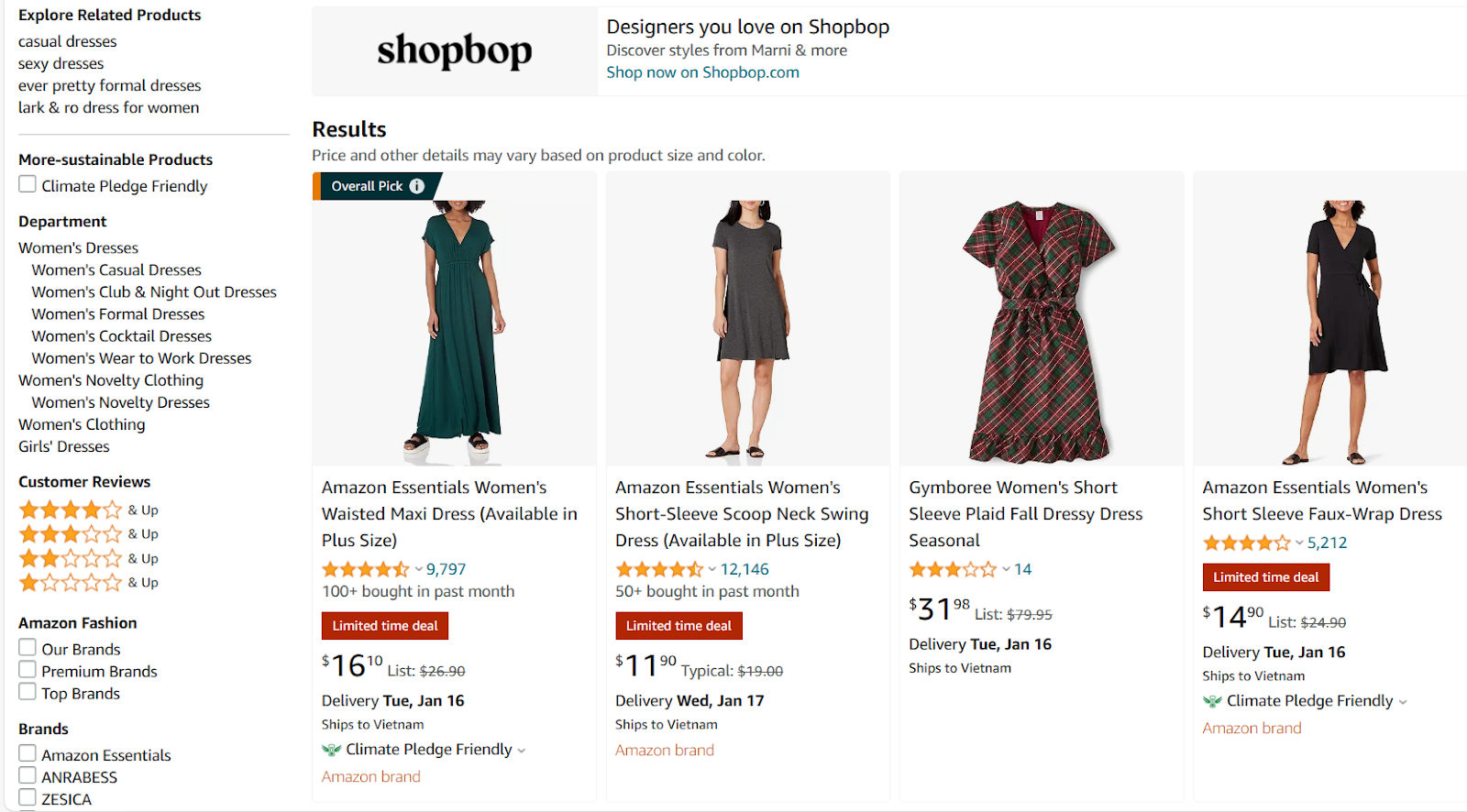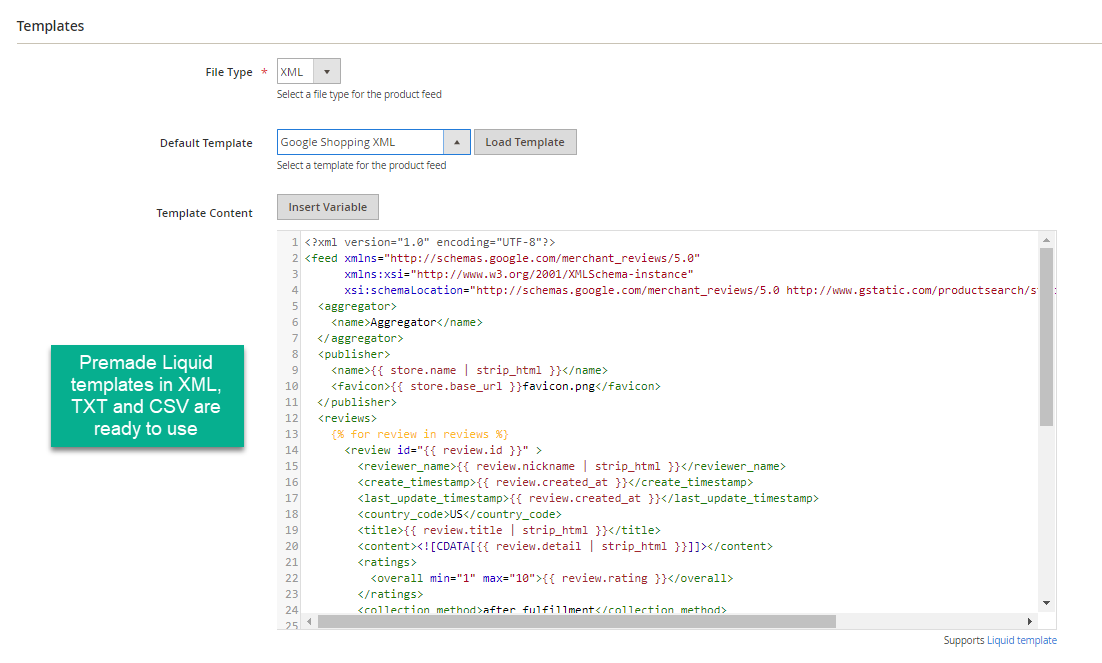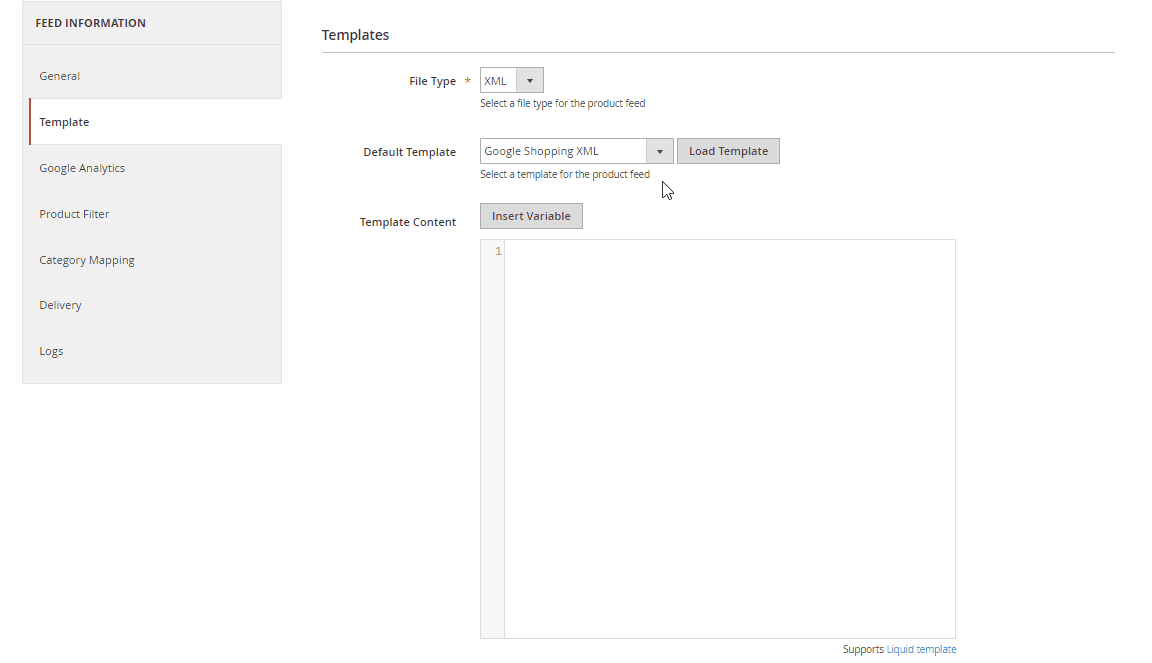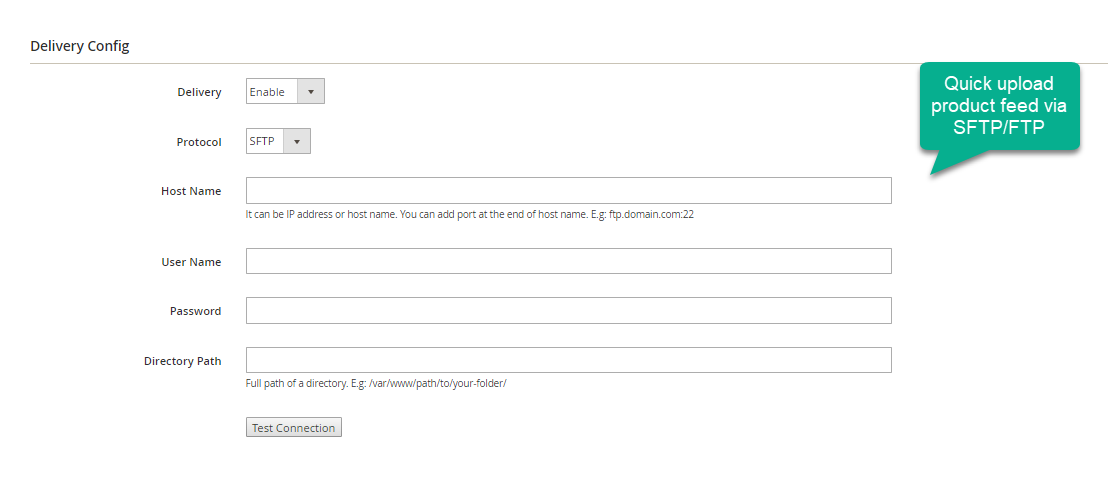What is a Product Feed and How It Helps Boost Sales?

Online marketplaces are a favorable environment for eCommerce businesses to achieve successful sales results. To take advantage of marketplaces, a product feed is what e-stores need to increase sales faster and make more profits. Mageplaza Product Feed for Magento 2 is an advanced tool that generates and runs product feeds on shopping channels. Via the module, online businesses easily draw customers’ attention, improve conversion rates and boost sales faster.
What Is a Product Feed?

Definition of Product Feed
A product feed is a structured file that contains all the relevant information about your products. This information is typically organized in a standardized format, such as XML or CSV, making it easy for different platforms to read and process the data. Each product in the feed is listed with its unique identifier, along with attributes such as the product title, description, price, and image URL.
By providing this detailed information, product feeds enable search engines and other platforms to display your products to potential customers who are actively searching for them.
Types of Feed
Listing Feed

This is the most common type that is most often used for advertising on various e-commerce platforms, such as Google or Instagram. It has basic details like product titles, descriptions, prices, images, and stock levels. This is what marketplaces use to show your products for sale. By default, directories are saved in either a special code format (XML) or a comma-separated value format (CSV).
Editorial feed

News feeds and article lists you see on websites are like channels showing curated content. These are called editorial feeds.They’re often made in a format called RSS, which lets other websites and apps know when there’s new stuff to see.
Importance of Product Feeds in E-commerce
Consumers now have a myriad of options at their fingertips when it comes to shopping online. With so much choice available, how do you ensure that your products are seen by the right customers at the right time? A product feed contains detailed information about your products, such as their titles, descriptions, prices, and availability. It can then be submitted to various platforms, such as search engines, marketplaces, and comparison shopping engines, to promote your products and drive traffic to your online store.
Why does a business need Product Feed?
Businesses are continually seeking innovative ways to enhance their online presence, connect with their target audience, and drive sales. One such indispensable tool that has emerged as a game-changer for businesses is the Product Feed. This article delves into the reasons why businesses today need product feeds to thrive in the digital realm.
Maximizing Visibility on Multiple Channels
In the digital era, consumers are no longer confined to a single online platform. They navigate through various channels, such as social media, comparison shopping engines, and marketplaces. A product feed serves as a centralized data source, enabling businesses to effortlessly distribute and synchronize their product information across multiple channels. This not only expands their reach but also ensures consistent and up-to-date product details, fostering trust among consumers.
Enhancing Advertising Efficiency
For businesses engaged in online advertising, product feeds are a cornerstone for creating dynamic and engaging ads. Platforms like Google Ads and Facebook allow businesses to leverage product feed data to generate personalized and targeted advertisements. By providing accurate and comprehensive information about products, businesses can tailor their ads to specific demographics, significantly increasing the chances of conversion.
Streamlining Inventory Management
Efficient inventory management is vital for the seamless operation of any e-commerce business. Product feeds act as a conduit between a business’s inventory and various sales channels. By regularly updating the product feed, businesses can ensure that their inventory levels are accurately reflected across all platforms. This not only prevents overselling or underselling but also enhances the overall customer experience by minimizing the risk of delivering incorrect product information.
Improving SEO Performance
Search engine optimization (SEO) is a linchpin for online visibility. Product feeds contribute significantly to SEO efforts by providing search engines with structured and rich product information. This makes it easier for search engines to index and rank products accurately. As a result, businesses utilizing product feeds are more likely to appear in relevant search results, driving organic traffic and increasing the likelihood of conversions.
Facilitating Dynamic Pricing Strategies
Competitive pricing is a crucial aspect of succeeding in the online marketplace. Product feeds empower businesses to implement dynamic pricing strategies by swiftly updating prices based on market conditions, competitor pricing, or promotions. This agility allows businesses to stay competitive, attract price-conscious consumers, and maximize profitability.
Adapting to the Mobile-First Landscape
With an increasing number of consumers using mobile devices for online shopping, businesses need to adapt. Product feeds enable the seamless transfer of product information to mobile-friendly formats, ensuring a consistent and optimized shopping experience across various devices. This adaptability is key to capturing the attention of the ever-growing mobile audience.
Who gets benefits from an optimized product feed?
In the digital marketplace, where attention is gold dust, a well-structured, optimized product feed is not just a tool – it’s a treasure map leading to increased visibility, customer engagement, and ultimately, skyrocketing sales. But who exactly gets to claim this bounty? Let’s delve deeper into the diverse beneficiaries of an optimized product feed:
1. The Rising Stars: For small and medium-sized online retailers, a perfectly crafted feed acts as a leveling-up potion. Their carefully curated products, usually obscured by the giants, can suddenly shine brightly in search results and marketplaces. Imagine your handcrafted jewelry or local coffee beans gracing the front page of a major platform – that’s the power of an optimized feed!
2. The Established Giants: Even for large e-commerce platforms, product feed optimization is like polishing a diamond. They might already have the traffic, but an optimized feed maximizes its potential. By fine-tuning product information, targeting specific audiences, and utilizing advanced features like ad groups and promotions, they can convert more browsers into buyers, further consolidating their dominance.
3. The Niche Navigators: For specialization stores, catering to a unique audience, an optimized feed is like a secret handshake. It allows them to speak directly to their tribe, showcasing products that resonate with their specific interests and needs. Imagine a vintage clothing store highlighting its curated collection of 1920s flapper dresses to the right vintage enthusiasts – that’s the targeted power of an optimized feed!
4. The Data-Driven Dynamos: For data-savvy businesses, a product feed is a playground of possibilities. They can analyze click-through rates, conversion rates, and other metrics to continuously refine their feed, ensuring it stays relevant and responsive to customer behavior. Think of it as an adaptive algorithm, constantly learning and improving to deliver the perfect product match.
5. The Customer Champions: But ultimately, the true beneficiary of an optimized product feed is the customer. No more wading through irrelevant results or missing out on hidden gems. An optimized feed presents the right products, at the right time, making their shopping experience seamless, efficient, and delightful.
So, remember, optimizing your product feed is not just about technical specs and algorithms. It’s about unlocking the full potential of your online presence, reaching a wider audience, and ultimately, building a loyal customer base. In the ever-evolving e-commerce landscape, a well-structured product feed is not just a tool – it’s a golden key to unlocking success.
How to optimize product feeds to boost sales?
Product feeds play an important role in transferring information to marketplaces as well as optimizing the purchasing process. However, many store owners have no idea of using data feeds properly. There are some essential tips for e-commercial businesses to make use of the feeds to boost sales rates across online marketplaces.
Use proper file formats
It is necessary to choose the right formats that are suitable for your online business when building your product data. There are 3 common forms that e-stores should focus on: .XML .TXT .CSV These formats will work perfectly for the most used shopping marketplaces such as Google Shopping, Facebook, Amazon, eBay, etc. As a result, the shopping channels immediately reference your data feed and interact with the displayed products.

Mageplaza Product Feed extension offers ready-to-use feed templates to Magento 2 stores. The available templates have high performance and meet all requirements of popular selling channels. Besides, store owners can insert variables into the templates or choose an available format of frequently-used variables from the admin panel.
The module provides not only ready-to-use feed templates but also customizable ones. Administrators can create numerous templates with the support of usable variables. All templated created by Mageplaza Product Feed module are friendly to any shopping search engine. Thus, selling channels can access and adapt product data to their displaying styles.

Update feeds regularly
Some significant data feeds such as prices, product descriptions, titles and attributes should be updated on a routine basis. If product feeds are created and updated regularly, your store performance is improved dramatically on marketplaces. With the latest and accurate information about the products, your shop easily captures potential purchasers’ attention and make more profits across the marketplaces.
Generating and updating product data takes many hours if your shop still works manually. Instead of wasting lots of time, Mageplaza Product Feed extension is an excellent solution for Magento stores. This module updates information automatically on selling channels, affiliate program websites, and marketplaces with specific schedules. Admins can choose a certain time period to auto-generate feeds as daily, weekly, or monthly. Moreover, via the advanced FTP and SFTP technology, the extension is able to upload the data at high speed. Consequently, e-business owners find it effortless to deliver the data in the blink of an eye.

Manage product feeds
Product feeds management plays an important role in operating online stores as well as boosting sales on marketplaces. When the amount of product data is increases more and more, you may lose your control and then your store gets the wrong track. This is the reason why online businesses need to manage data feeds when participating in shopping channels. A smooth ongoing process without mistakes keeps your high performance on all shopping search engines. Thus, your rank and brand are improved remarkably.
Magento 2 Product Feed module provides feed logs that enable administrators to manage all the product feeds on the selling channels and other marketplaces. Store owners can take control of every single product feed and solve unexpected problems on time. Without workloads and time-consuming issues, the feed extension is a powerful supporter for eCommerce businesses to achieve great success on the online marketplaces.
Analyze data feeds and give the right directions
After generating and running product feeds on shopping channels, store owners need to track and evaluate their product performance regularly. Proper assessment of these product feeds allows merchants to identify opportunities, adjust strategies, and enhance visibility on various marketplaces effectively.
Integrating Mageplaza Product Feed with Magento 2 GA4 Ecommerce tracking provides administrators with valuable insights into product effectiveness across different shopping engines. By leveraging detailed analytics reports, store owners can clearly understand how products perform, which products drive conversions, and where improvements can be made. With these insights, making strategic decisions becomes easier, ensuring that your products reach potential customers everywhere they search.
Related Posts:
Final thoughts
In conclusion, online marketplaces are a great opportunity for eCommerce stores to show their business capabilities and extend brand awareness. To create a close connection between online shops and selling channels, product feeds are obviously a crucial factor. Magento 2 Product Feed extension by Mageplaza works as an advanced communication tool with the aim to perform the products on Google Shopping, Bing, and Amazon. Thus, the module enables stores to convert more customers and drive big sales. Grab your chance right now!
Looking for Sales Booster Tools for Magento 2 stores? Get it here!








![Top 20+ Must-have Shopify Apps for 2025 [Free & Paid] - Mageplaza](https://cdn2.mageplaza.com/media/blog/must-have-shopify-apps/top-must-have-shopify-apps.png)
![[2025 Updates] Top 10+ Upsell Apps for Shopify - Mageplaza](https://cdn2.mageplaza.com/media/blog/best-upsell-shopify-app/cover.png)